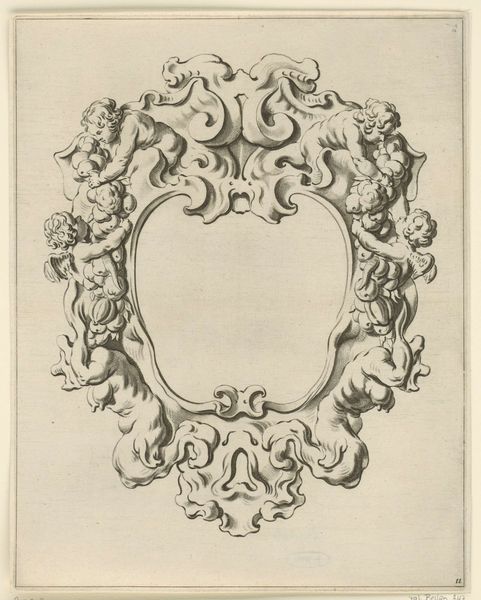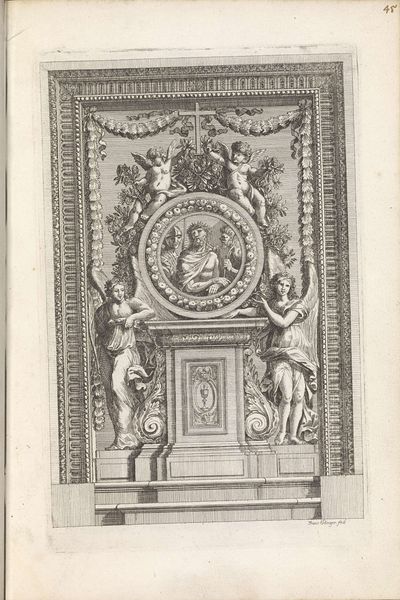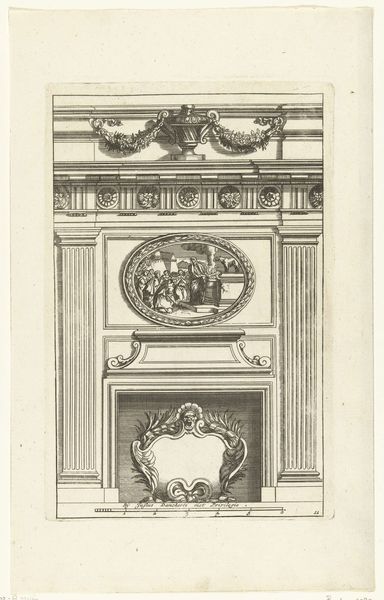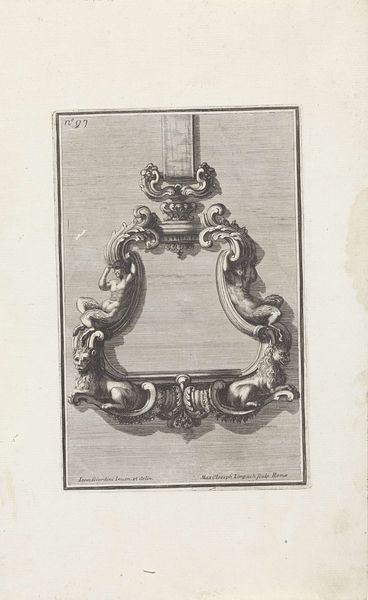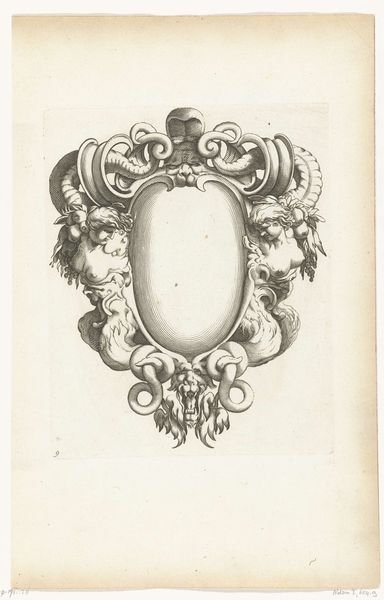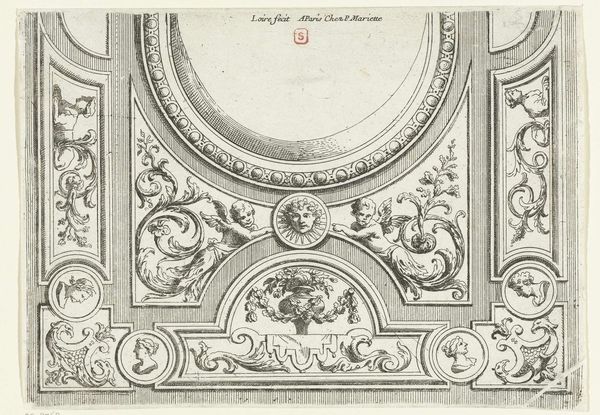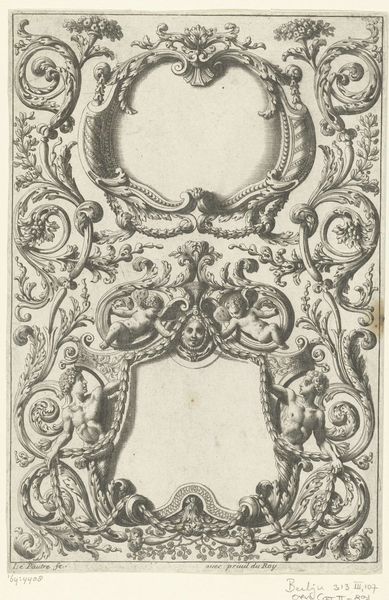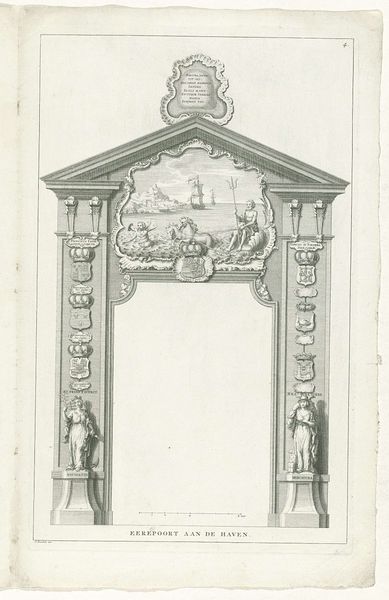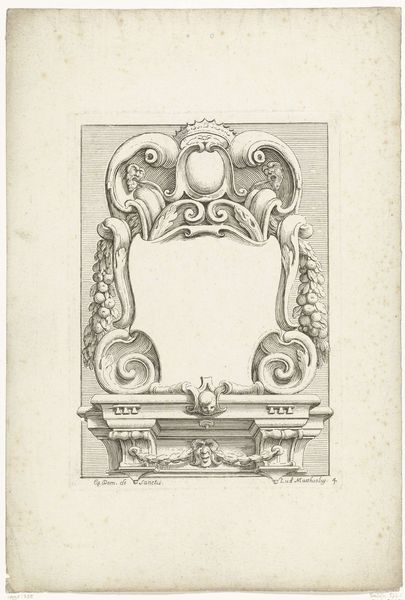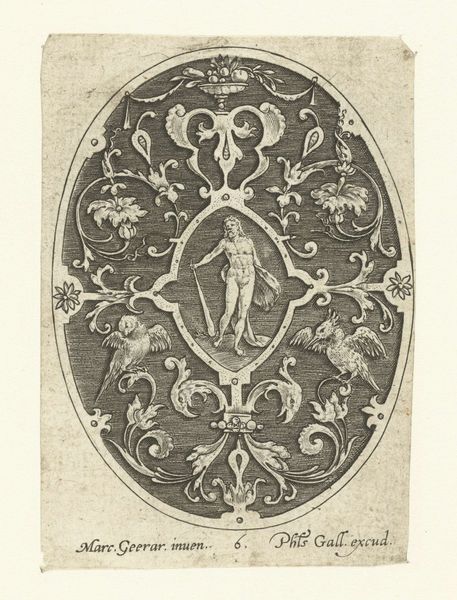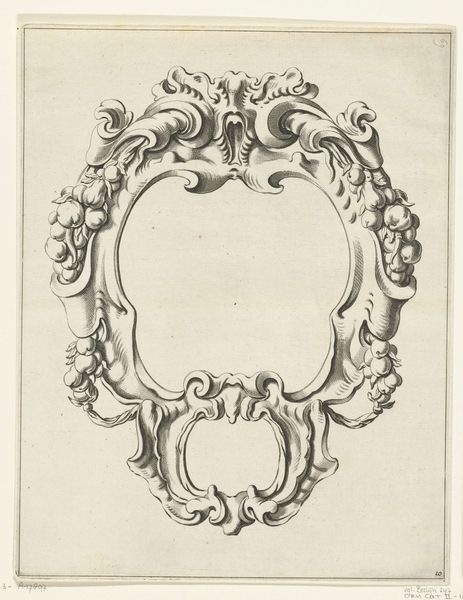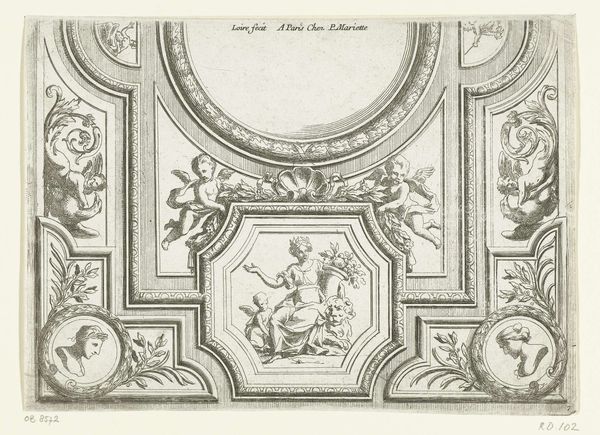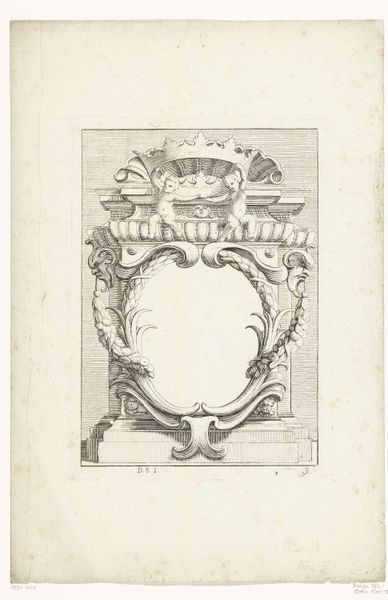
drawing, ornament, print, relief, engraving
#
portrait
#
drawing
#
ornament
#
baroque
#
pen drawing
# print
#
relief
#
figuration
#
line
#
academic-art
#
engraving
Dimensions: height 180 mm, width 150 mm
Copyright: Rijks Museum: Open Domain
Nicolas Pierre Loir created this “Half Plafond” engraving in the 17th century, a design brimming with classical motifs intended for architectural decoration. Note the cherubs—symbols of love and innocence, flanking a classical bust. These figures, reminiscent of ancient putti, are not merely decorative. Their presence evokes a sense of nostalgia for a golden age, a theme echoed throughout Renaissance art. This motif has roots stretching back to antiquity where cherubs adorned Roman sarcophagi, signifying the soul's journey. Over time, their meaning evolved, influenced by Christian theology, transforming them into angelic beings associated with divine love. The wreath, a signifier of victory and eternity, is echoed in other artworks through time, from ancient Rome to Neo-classical paintings. It represents the cyclical nature of life and the enduring power of memory, engaging viewers on a subconscious level with its promise of immortality. This use of iconography taps into our deepest psychological desires, a longing for permanence in an ever-changing world. Through a non-linear progression, the cherubs and wreath have resurfaced, and evolved, carrying with them echoes of past cultures, and have taken on new meanings through different historical contexts.
Comments
No comments
Be the first to comment and join the conversation on the ultimate creative platform.
